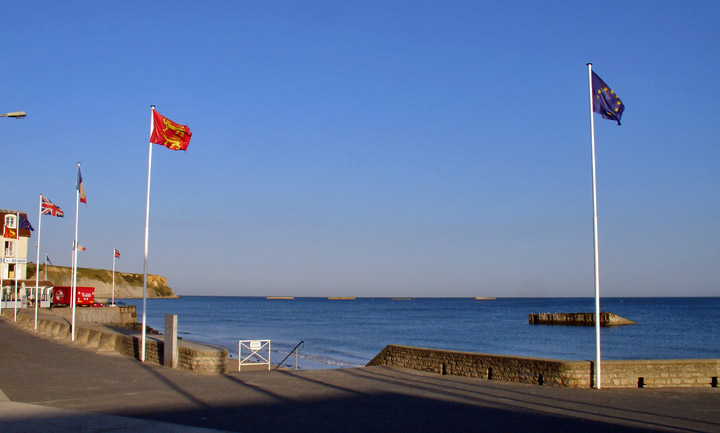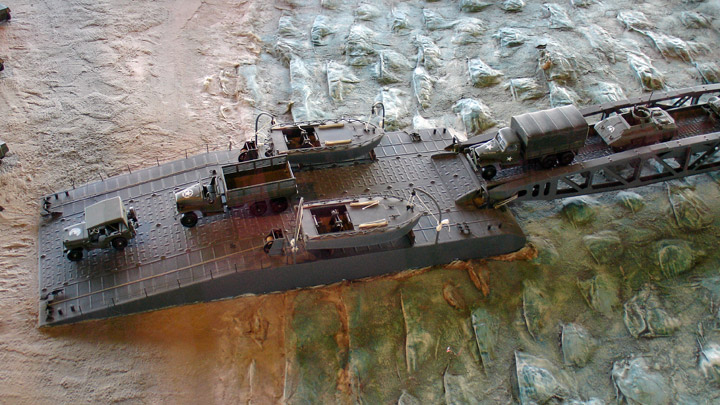

Mulberry
Name given to the artificial
harbors created to land material
shortly after the Normandy landing

built at Sword beach
(ruminants of the "Mulberry" seen in the water)

at the Museum in Arromanches

the Museum

showing the landing beaches

looking through the window to where the Mulberry was assembled
The final evidence of the industrial might of the Allies was the Mulberry Harbors, (so named because the mulberry plant grows rapidly.) Allied planners knew that Cherbourg Harbor, (50 miles away and the nearest deep-water harbor on the coastline), might not be available in time to continue the required pace for the troop buildup. Thus, they drafted a plan to build breakwaters by towing 150 prefabricated concrete shells; each 200 feet long, by 60 feet wide, by 60 feet high; across the Channel, designed to be filled and sunk off the landing beaches. Built within weeks by American military and English crews in a round-the-clock effort, the blocks formed, when towed across the channel and put in place, a breakwater a mile long: 30 feet above sea level at low tide, and still 10 feet above sea level at high tide. Seven Liberty ships at a time could dock at a Mulberry, unloading their cargo into landing craft, and keeping the flow of men and materiel on schedule.


building the Mulberry
When completed, each Mulberry was about one mile long, and stood about 30 feet above sea level at low tide, 10 feet above sea level at high tide. Seven Liberty ships at a time could tie up at a Mulberry to unload their cargo into landing craft.



units still surviving at the edge of the town

Phoenix
Shipyards around Great Britain employed 20,000 workers around the clock to build 150 concrete structures 200 feet long by 60 feet wide, by 60 feet high. These hollow blocks, called Phoenixes, were to be laid end to end to form two giant breakwaters -- one at the British beach, one at the American.

landing on the beach

in the landing craft

the British soldier

the Americans

Omaha beach

monuments on the beach

communications

air power